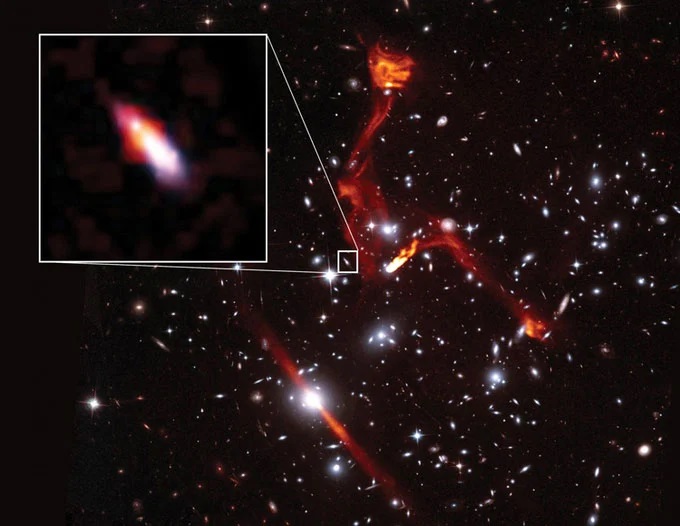Experts have found the galaxy to be possibly the weakest radio transmitting object on record thanks to its gravitational lens approach.
Radio telescopes are the world’s most sensitive radio signal receivers, capable of detecting extremely weak waves emitted by distant objects in the universe. Thanks to the National Science Foundation (NSF) Karl G. Jansky Very Large Array (VLA) observatory, astronomers have discovered a galaxy that is possibly the weakest radio signal on record. 20. New research published in the journal Astrophysical.
The new discovery is part of the VLA Frontier Fields Legacy Survey program led by astronomer Eric Murphy at the US National Radio Observatory (NRAO). The program uses clusters of distant galaxies as natural lenses to study distant objects. The cluster acts like gravitational lenses, using the gravitational force of the galaxies within the cluster to bend and amplify radio waves and light emitted by distant objects.
In the new composite image, the VLA radio image is superimposed on the visible light image of the Hubble Space Telescope. Red-orange objects are radio sources in the MACSJ0717.5 + 3745 galaxy cluster. This cluster is more than 5 billion light years from Earth.
The photo also helps scientists discover a galaxy far, up to 8 billion light years from Earth. This galaxy is named VLAHFF-J071736.66 + 374506.4. Its light and radio waves are distorted by the gravitational lensing effect of the front cluster of galaxies.
The radio image of VLAHFF-J071736.66 + 374506.4 is amplified 6 times by the attractive lens. This allows scientists to find it. “VLAHFF-J071736.66 + 374506.4 is probably the weakest radio transmitter on record. This is also why we want to use galaxy clusters as cosmic lenses to better understand these objects behind them,” says Ian Heywood, expert at Oxford University. .
“Gravitational lens amplification combined with ultra-sensitive VLA images gives us completely new observations of the structure of a galaxy as heavy as 1/300 of the Milky Way galaxy in the early universe. provided valuable insight into the formation of stars in ancient small-mass galaxies and how they aggregated into larger mass galaxies, ”said Eric Jimenez-Andrade, a scientist at NRAO.


